Abstract
The fungus Cunninghamella elegans ATCC 36112 metabolized approximately 80% of the 3-14C-labeled fluoranthene (FA) added within 72 h of incubation. C. elegans metabolized FA to trans-2,3-dihydroxy-2,3-dihydrofluoranthene (trans-2,3-dihydrodiol), 8- and 9-hydroxyfluoranthene trans-2,3-dihydrodiol, 3-fluoranthene-beta-glucopyranoside, and 3-(8-hydroxyfluoranthene)-beta-glucopyranoside. These metabolites were separated by thin-layer and reversed-phase high-performance liquid chromatography and identified by 1H nuclear magnetic resonance, UV, and mass spectral techniques. The major pathway involved hydroxylation to form a glucoside conjugate of 3-hydroxyfluoranthene and a glucoside conjugate of 3,8-dihydroxyfluoranthene which together accounted for 52% of the total ethyl acetate-soluble metabolites. C. elegans initially metabolized FA in the 2,3 position to form fluoranthene trans-2,3-dihydrodiol, which has previously been shown to be a biologically active compound in mammalian and bacterial genotoxicity tests. However, C. elegans formed predominantly glucoside conjugates of the phenolic derivatives of FA, which suggests that this fungus has the potential to detoxify FA.
Full text
PDF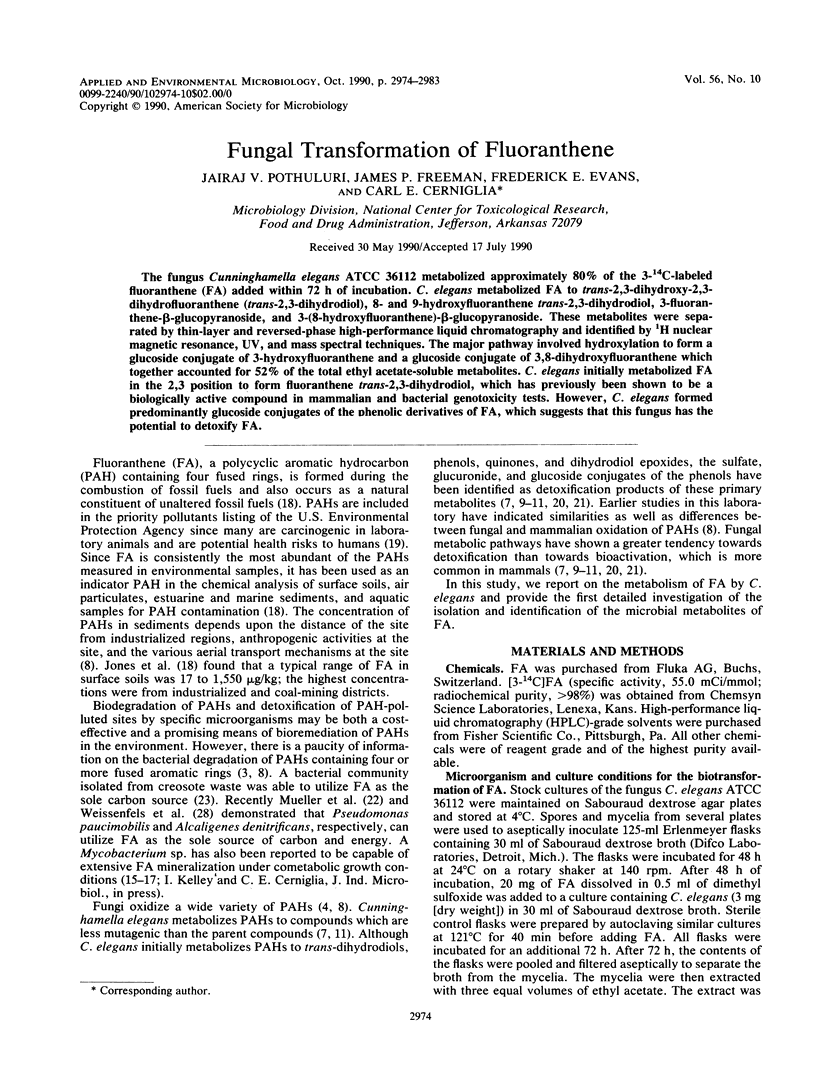
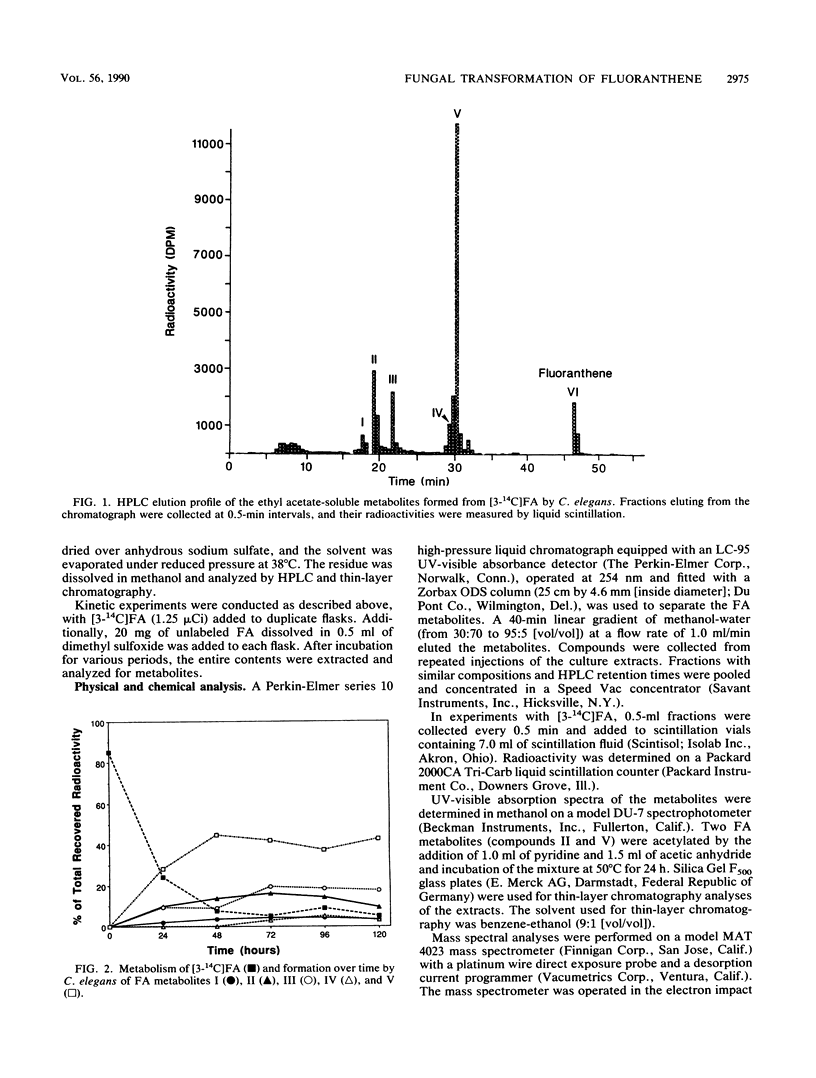
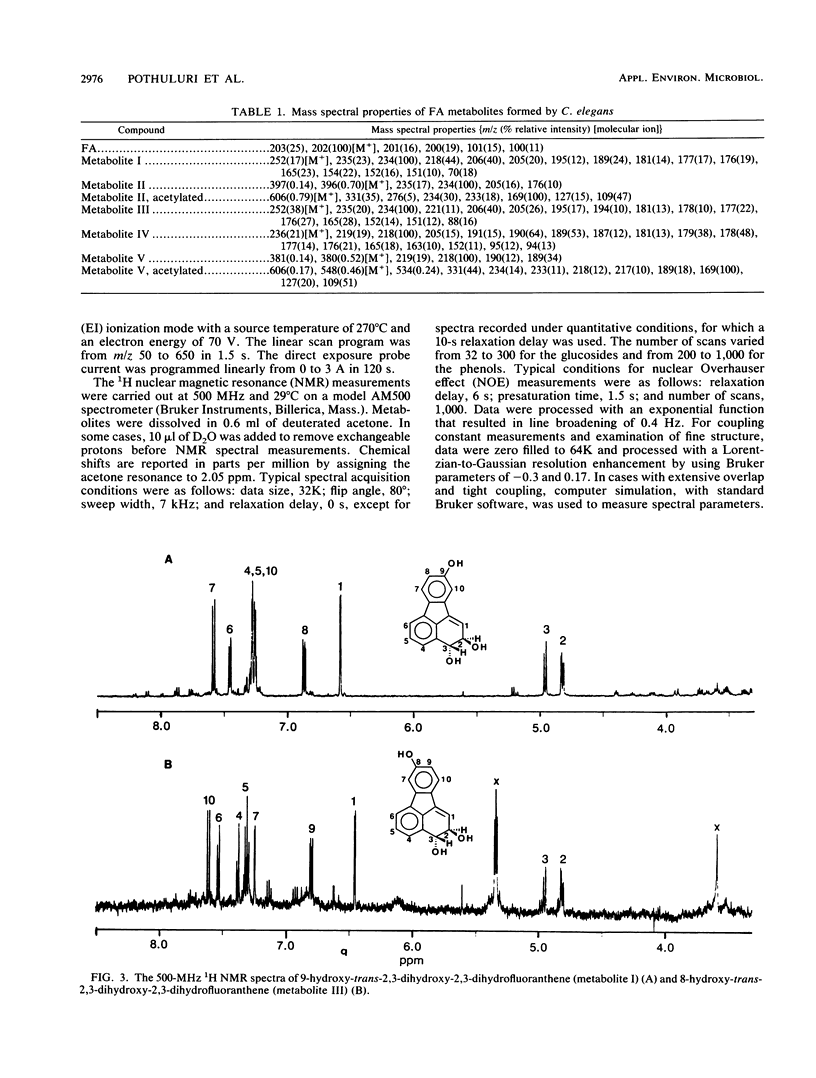
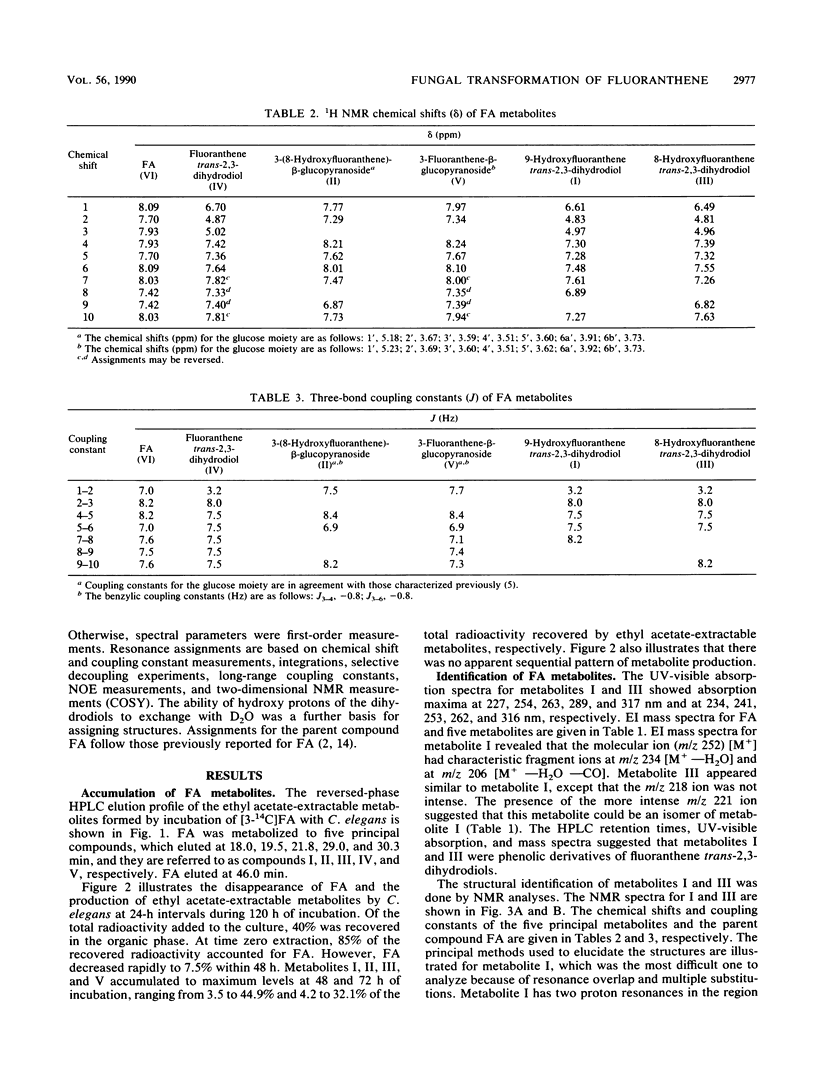
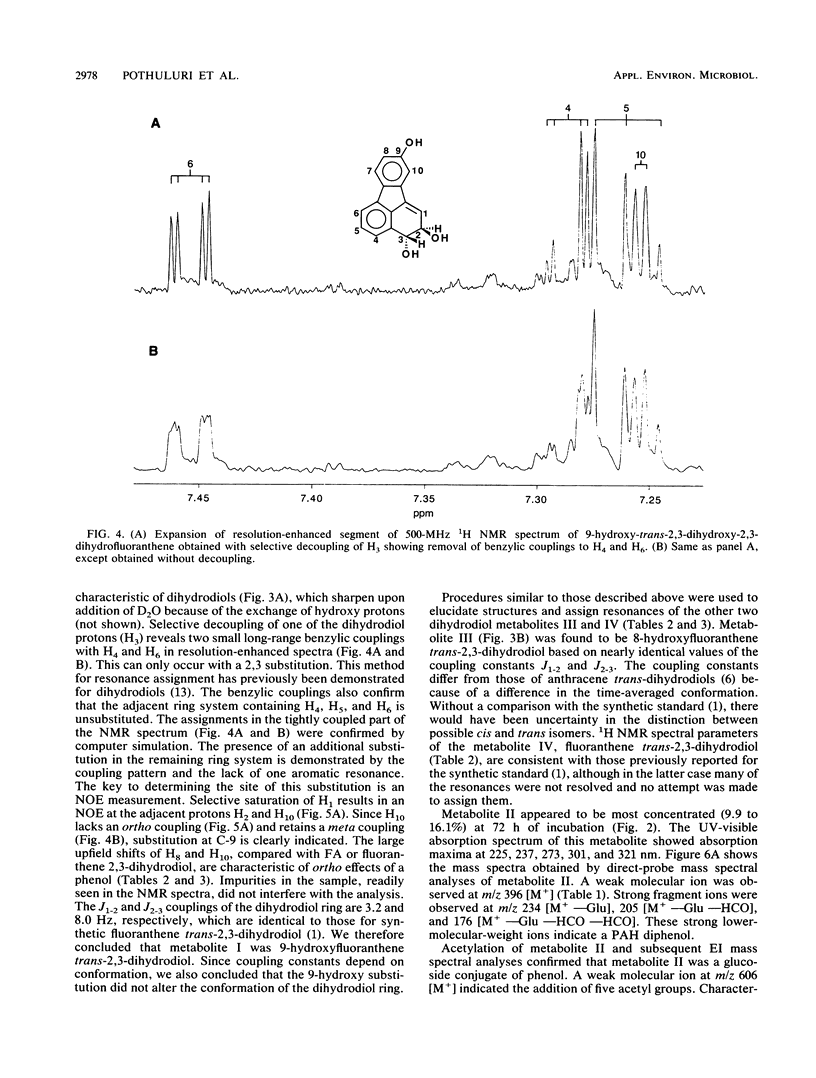
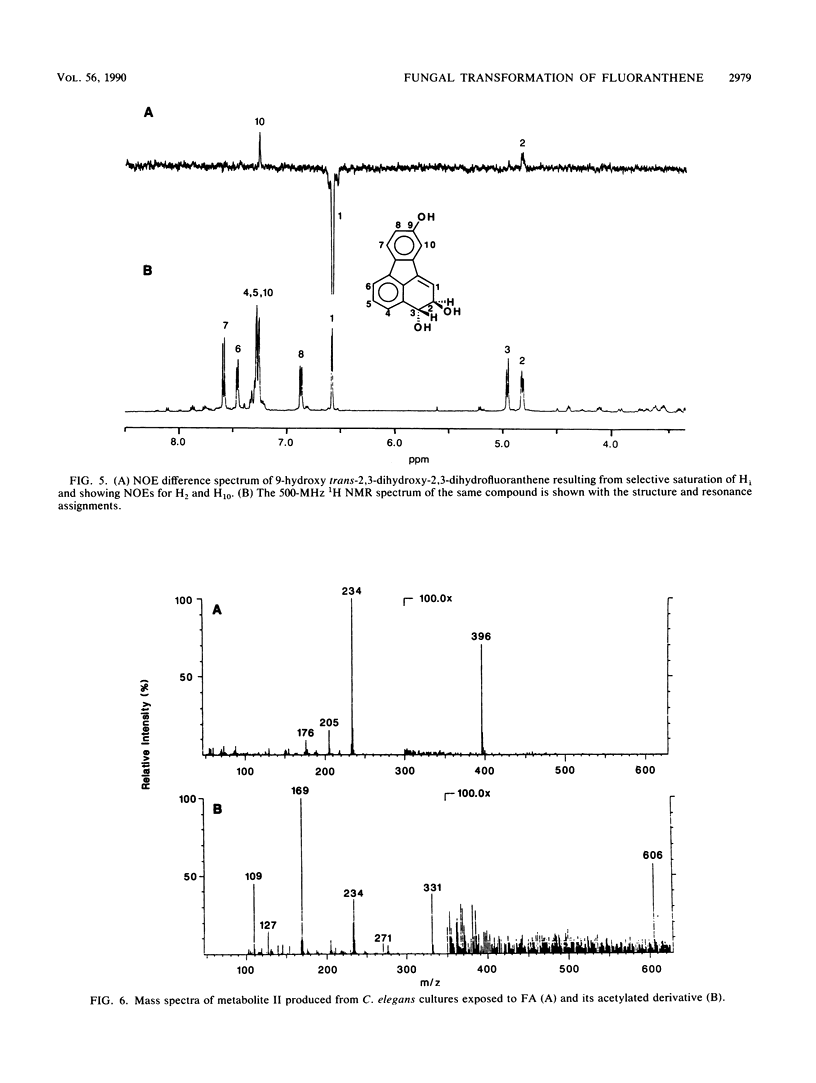
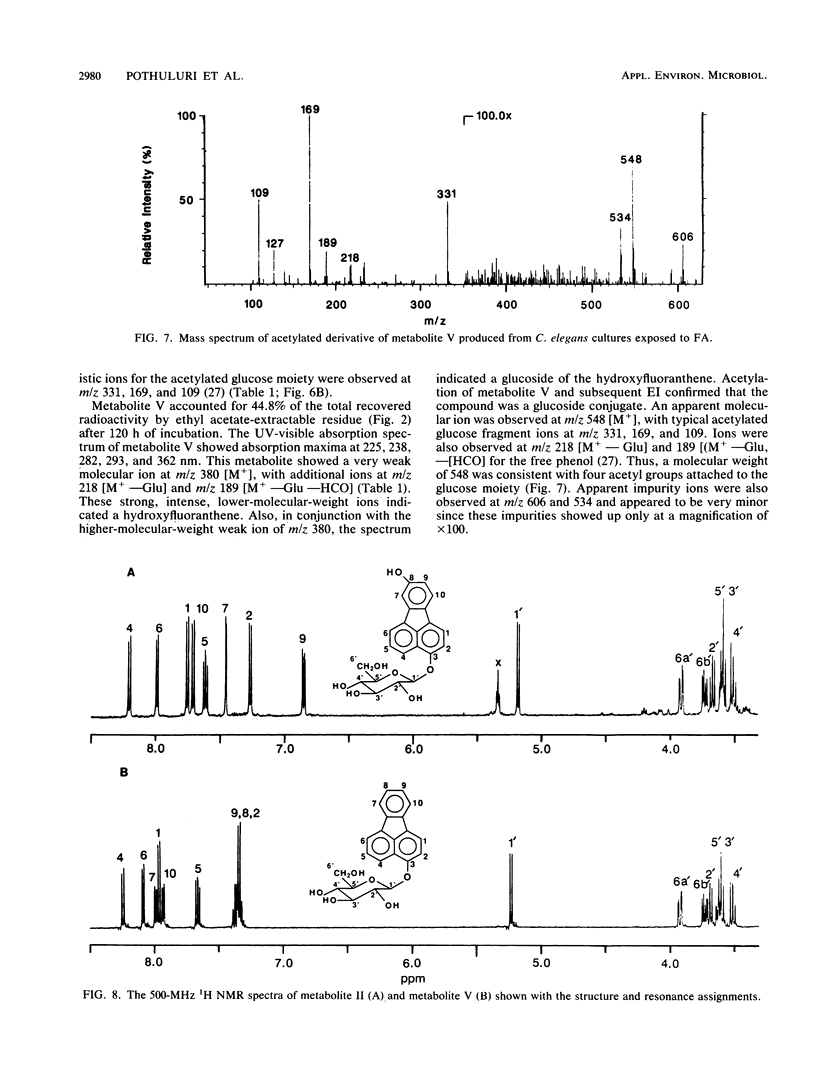
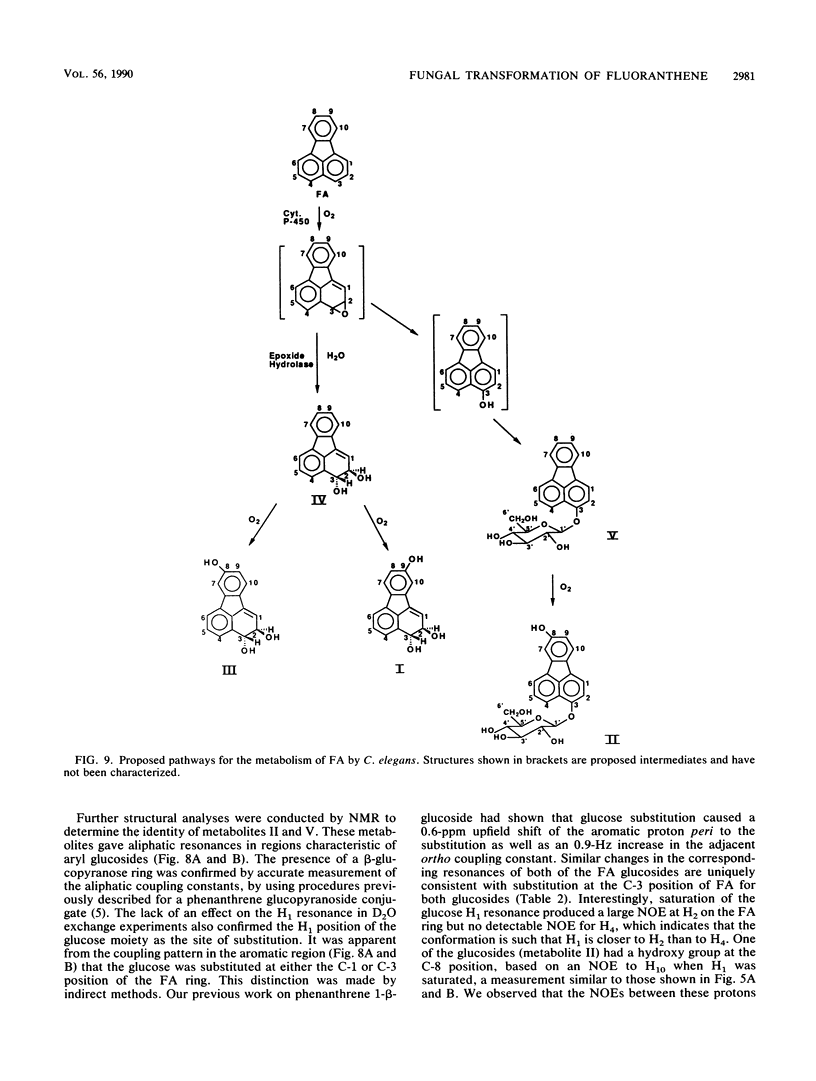
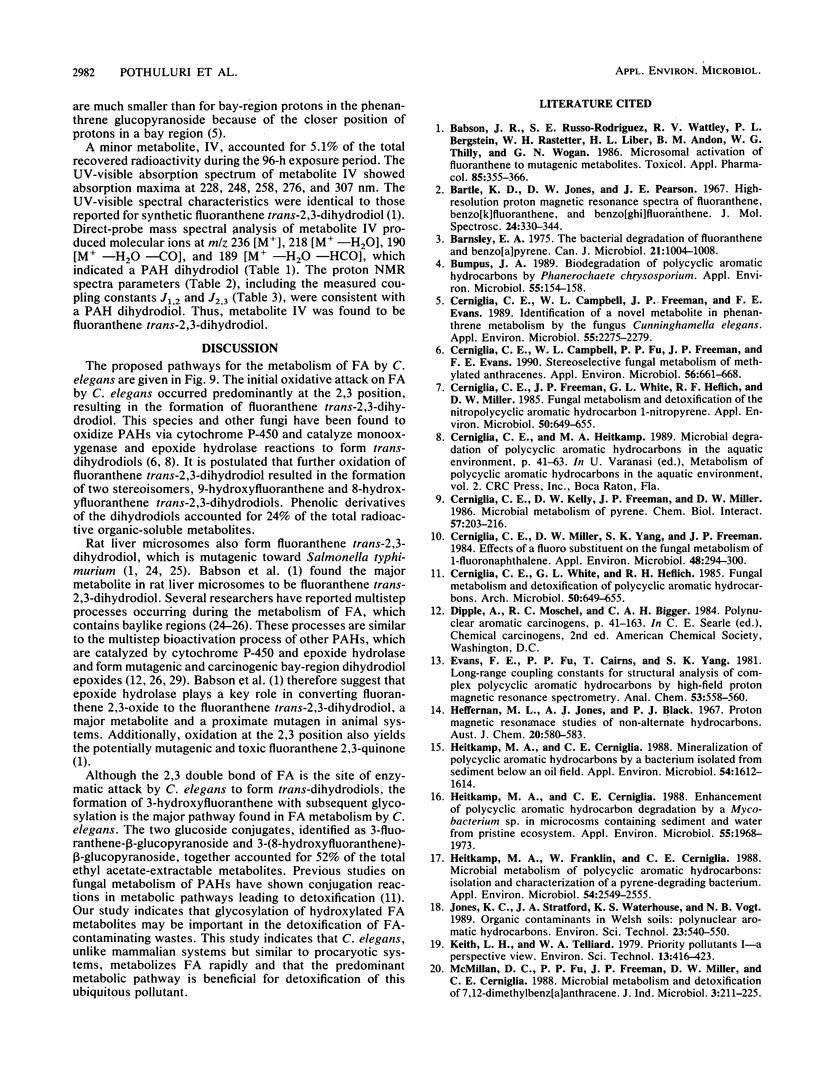
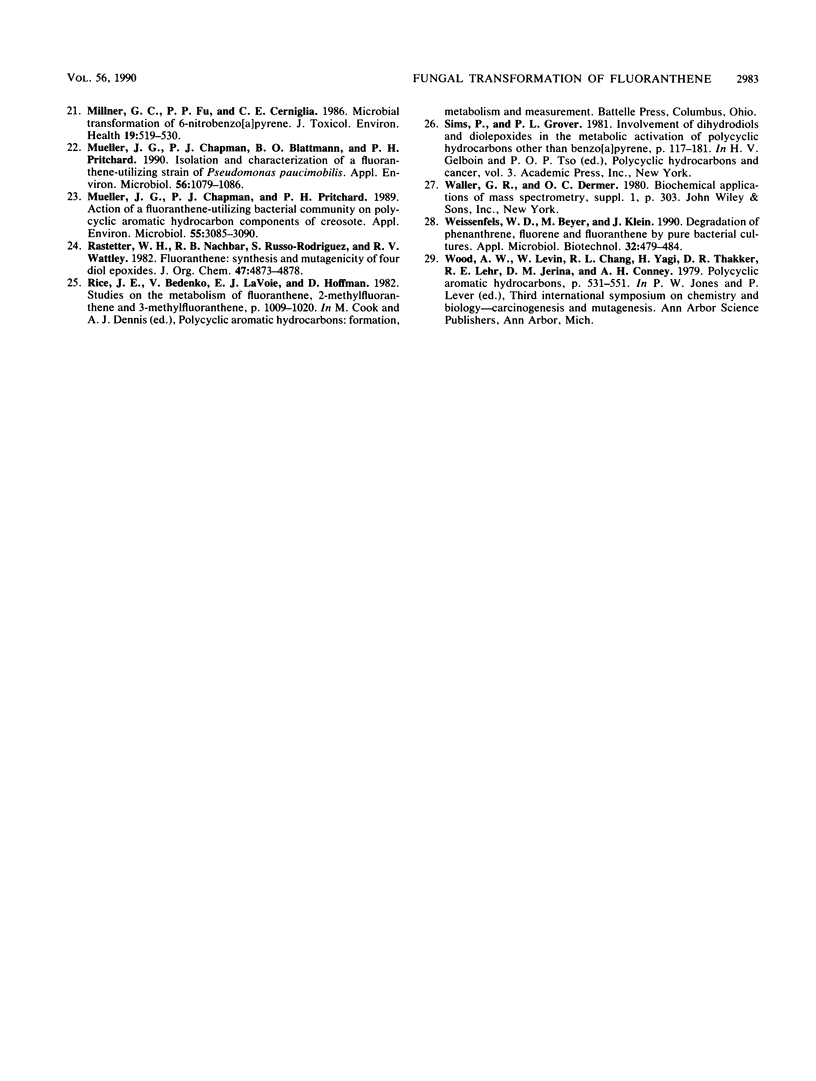
Selected References
These references are in PubMed. This may not be the complete list of references from this article.
- Babson J. R., Russo-Rodriguez S. E., Wattley R. V., Bergstein P. L., Rastetter W. H., Liber H. L., Andon B. M., Thilly W. G., Wogan G. N. Microsomal activation of fluoranthene to mutagenic metabolites. Toxicol Appl Pharmacol. 1986 Sep 30;85(3):355–366. doi: 10.1016/0041-008x(86)90343-1. [DOI] [PubMed] [Google Scholar]
- Barnsley E. A. The bacterial degradation of fluoranthene and benzo[alpyrene. Can J Microbiol. 1975 Jul;21(7):1004–1008. doi: 10.1139/m75-148. [DOI] [PubMed] [Google Scholar]
- Bumpus J. A. Biodegradation of polycyclic hydrocarbons by Phanerochaete chrysosporium. Appl Environ Microbiol. 1989 Jan;55(1):154–158. doi: 10.1128/aem.55.1.154-158.1989. [DOI] [PMC free article] [PubMed] [Google Scholar]
- Cerniglia C. E., Campbell W. L., Freeman J. P., Evans F. E. Identification of a novel metabolite in phenanthrene metabolism by the fungus Cunninghamella elegans. Appl Environ Microbiol. 1989 Sep;55(9):2275–2279. doi: 10.1128/aem.55.9.2275-2279.1989. [DOI] [PMC free article] [PubMed] [Google Scholar]
- Cerniglia C. E., Campbell W. L., Fu P. P., Freeman J. P., Evans F. E. Stereoselective fungal metabolism of methylated anthracenes. Appl Environ Microbiol. 1990 Mar;56(3):661–668. doi: 10.1128/aem.56.3.661-668.1990. [DOI] [PMC free article] [PubMed] [Google Scholar]
- Cerniglia C. E., Freeman J. P., White G. L., Heflich R. H., Miller D. W. Fungal metabolism and detoxification of the nitropolycyclic aromatic hydrocarbon 1-nitropyrene. Appl Environ Microbiol. 1985 Sep;50(3):649–655. doi: 10.1128/aem.50.3.649-655.1985. [DOI] [PMC free article] [PubMed] [Google Scholar]
- Cerniglia C. E., Kelly D. W., Freeman J. P., Miller D. W. Microbial metabolism of pyrene. Chem Biol Interact. 1986 Feb;57(2):203–216. doi: 10.1016/0009-2797(86)90038-4. [DOI] [PubMed] [Google Scholar]
- Cerniglia C. E., Miller D. W., Yang S. K., Freeman J. P. Effects of a fluoro substituent on the fungal metabolism of 1-fluoronaphthalene. Appl Environ Microbiol. 1984 Aug;48(2):294–300. doi: 10.1128/aem.48.2.294-300.1984. [DOI] [PMC free article] [PubMed] [Google Scholar]
- Heitkamp M. A., Cerniglia C. E. Mineralization of polycyclic aromatic hydrocarbons by a bacterium isolated from sediment below an oil field. Appl Environ Microbiol. 1988 Jun;54(6):1612–1614. doi: 10.1128/aem.54.6.1612-1614.1988. [DOI] [PMC free article] [PubMed] [Google Scholar]
- Heitkamp M. A., Cerniglia C. E. Polycyclic aromatic hydrocarbon degradation by a Mycobacterium sp. in microcosms containing sediment and water from a pristine ecosystem. Appl Environ Microbiol. 1989 Aug;55(8):1968–1973. doi: 10.1128/aem.55.8.1968-1973.1989. [DOI] [PMC free article] [PubMed] [Google Scholar]
- Heitkamp M. A., Franklin W., Cerniglia C. E. Microbial metabolism of polycyclic aromatic hydrocarbons: isolation and characterization of a pyrene-degrading bacterium. Appl Environ Microbiol. 1988 Oct;54(10):2549–2555. doi: 10.1128/aem.54.10.2549-2555.1988. [DOI] [PMC free article] [PubMed] [Google Scholar]
- Millner G. C., Fu P. P., Cerniglia C. E. Microbial transformation of 6-nitrobenzo[a]pyrene. J Toxicol Environ Health. 1986;19(4):519–530. doi: 10.1080/15287398609530949. [DOI] [PubMed] [Google Scholar]
- Mueller J. G., Chapman P. J., Blattmann B. O., Pritchard P. H. Isolation and characterization of a fluoranthene-utilizing strain of Pseudomonas paucimobilis. Appl Environ Microbiol. 1990 Apr;56(4):1079–1086. doi: 10.1128/aem.56.4.1079-1086.1990. [DOI] [PMC free article] [PubMed] [Google Scholar]
- Mueller J. G., Chapman P. J., Pritchard P. H. Action of a fluoranthene-utilizing bacterial community on polycyclic aromatic hydrocarbon components of creosote. Appl Environ Microbiol. 1989 Dec;55(12):3085–3090. doi: 10.1128/aem.55.12.3085-3090.1989. [DOI] [PMC free article] [PubMed] [Google Scholar]
- Weissenfels W. D., Beyer M., Klein J. Degradation of phenanthrene, fluorene and fluoranthene by pure bacterial cultures. Appl Microbiol Biotechnol. 1990 Jan;32(4):479–484. doi: 10.1007/BF00903787. [DOI] [PubMed] [Google Scholar]


